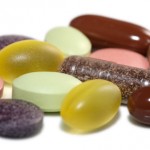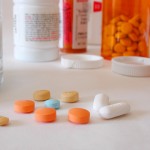 Have you heard that vitamin A is good for acne? Maybe you’ve also heard that it’s toxic? It seems that there is controversy out there about its toxicity, so I’d like to clear up the confusion by starting with how the source of vitamin A matters when questioning safety.
Have you heard that vitamin A is good for acne? Maybe you’ve also heard that it’s toxic? It seems that there is controversy out there about its toxicity, so I’d like to clear up the confusion by starting with how the source of vitamin A matters when questioning safety.
Vitamin A can either be natural or synthetically derived. Plants and animals contain it, but it can also be manufactured in a laboratory. Retinol (the proper name for naturally sourced, fat-soluble Vitamin A) is among the first nutrients discovered to be essential to human life. Remember, essential means we cannot have health without it. In fact, vitamin A is so important that the human body can actually manufacture it! I’ll say more about that later. Retinol is found in animal products, such as milk products and meats, the highest source being liver.
Since retinol is a fat-soluble vitamin, it remains in the body for longer periods of time than do water-soluble vitamins, such as vitamin C and most B vitamins. Excess amounts of retinol are stored in the liver. This is why higher doses may lead to alterations in liver function.
Another type of vitamin A-like molecule is not found in food. It’s isotretinoin, a synthetically produced kind of vitamin A. Isotretinoin is the acne drug, Accutane. If you are using isotretinoin orally as prescribed, your doctor requires you to have blood work done every few weeks to monitor liver function. This is because the dosage prescribed is so extremely high that it can cause liver damage (i.e. , a minimum of 100,000 i.u.! Compare this to the upper limit of retinol supplementation suggested by government health officials: 10,000 i.u.)
 Beta-Carotene: Now, scary things aside, compare isotretinoin to beta-carotene. Found in plant foods and often mislabeled as ‘vitamin A’ , beta-carotene is NOT the same as retinol. It has very different functions. Beta-carotene and other carotenoids such as alpha-carotene, lycopene, lutein and zeaxanthin have anti-oxidant properties, protecting cells from damage by unstable, reactive molecules. Highest food sources include fruits and vegetables that are yellow, orange or red in colour.
Beta-Carotene: Now, scary things aside, compare isotretinoin to beta-carotene. Found in plant foods and often mislabeled as ‘vitamin A’ , beta-carotene is NOT the same as retinol. It has very different functions. Beta-carotene and other carotenoids such as alpha-carotene, lycopene, lutein and zeaxanthin have anti-oxidant properties, protecting cells from damage by unstable, reactive molecules. Highest food sources include fruits and vegetables that are yellow, orange or red in colour.
The Magic of Beta-Carotene and Zinc
Because it is stored in the skin, not the liver, and isn’t retinol, beta-carotene wins the prize as the safest way to improve your vitamin A status. But the most interesting thing about beta-carotene is that it can be converted to retinol in the body. How effectively your body does this depends on a number of factors, such as liver and thyroid health, age and diet . In fact, without the mineral zinc you will not be able to produce retinol on your own! This becomes a really important fact if you are not eating a well-balanced, nutrient-dense diet. Vegetarians are wise to pay particularly close attention to plant foods rich in zinc if they suffer from acne or other skin problems since they are not eating any pre-formed retinol.
So, now that we’ve clarified the different types of vitamin A we can only now begin to assess their safety. Stay tuned for the next installment that will explain how vitamin A supports skin health!
